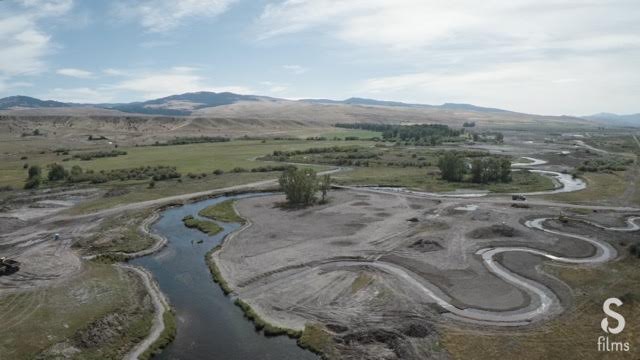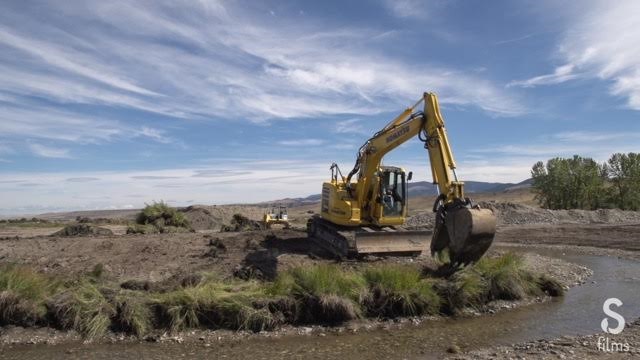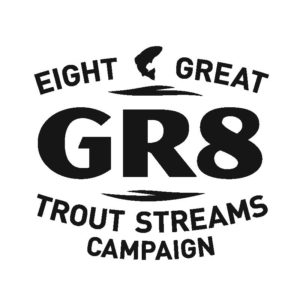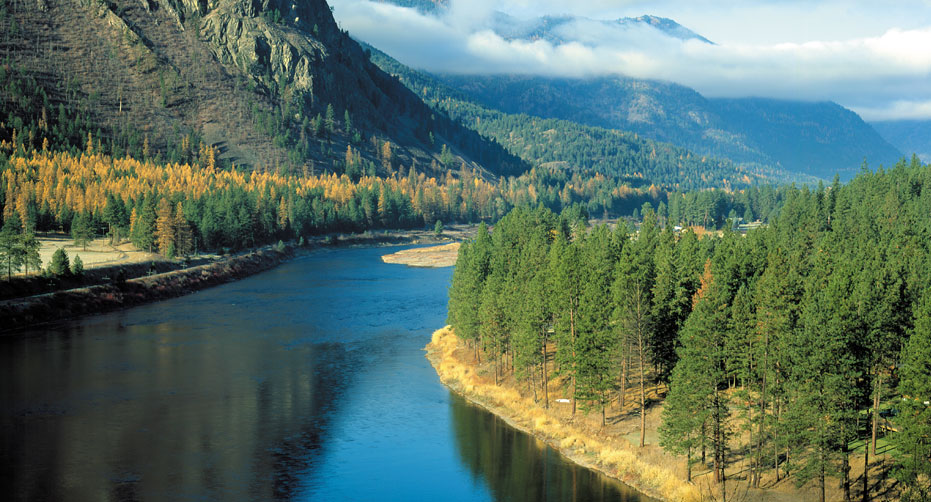
Rebuilding Modesty Creek creates new, improved habitat for fish and wildlife in the Upper Clark Fork
Imagine if you couldn’t use the highway to travel to your favorite lake. Or to access your favorite grocery store. Or to visit your family in a nearby town. Bummer, right? That’s probably how fish feel when a stream is cut off from the river.
Wild trout need clean, cold tributaries that are connected to the river. Think of the watershed as a complex road system: the river is like the interstate highway, while the streams are off-ramps that take fish into smaller networks of headwater creeks.
When one of the tributaries is disconnected from the river, it’s like closing an off-ramp and isolating an entire community. All of the tributary’s habitat becomes inaccessible for the fish that need it to eat, rest, and reproduce.
Modesty Creek in the Upper Clark Fork watershed is a case in point. This stream was intercepted before it reached the river by the Westside Ditch, a huge irrigation canal delivering water to agricultural operations in the Deer Lodge Valley. The two-foot waterfall created when the ditch intercepted the stream was too high for fish to surmount. Modesty Creek became an orphan stream for the past six decades, never reaching the river.
Luckily, it’s no longer an orphan. Thanks to a restoration project finished this year, Modesty Creek once again flows all the way to the river, reconnecting prime habitat for fish, birds, and wildlife in western Montana.

The skinny on the stream fix
The Coalition worked to redesign and rebuild the lower section of Modesty Creek. The project was funded by the Montana Natural Resources Damage Program in exchange for the landowners agreeing to a “conservation servitude” (similar to a conservation easement) that protects the restored site in perpetuity. Here’s a summary of what went down on Modesty Creek:
>> Constructed a new 3,400-foot stream channel on Dry Cottonwood Creek Ranch: This new channel design is curvier than the original stream, which means the water meanders more slowly to create deeper pools, more riparian and in-stream habitat, and higher groundwater levels that create wetland habitat in the floodplain.
>> Designed prime habitat: The combination of riffles, runs, and deep pools built into the new stream channel make it ideal for fish, while native wetland and riparian plants along the banks provide shade and food for aquatic life, birds, and other wildlife.
>> Built the new stream banks with natural and re-used materials: The banks were constructed with a combination of salvaged sod from the old channel as well as “soil lifts” made of biodegradable coconut fiber planted with willows and other shrubs. Both substrates foster fertile, wet conditions that quickly create a lush riparian corridor and stable stream banks.
>> Turned the abandoned stream channel into a wetland: Since the old stream channel still has a little groundwater flowing into it, this area now provides high-quality wetland and waterfowl habitat year-round.

MODESTY CREEK BY THE NUMBERS
- 20 square miles = size of the watershed
- 3,400 feet = length of newly built stream channel at the mouth
- 3 to 6 cfs = average flows near the mouth
- 2.7 to 4.8 degrees F = colder than the Clark Fork River in summer
- 2 to 3 feet = average depth to groundwater
- 5 to 10 feet = average stream channel width
- 1 to 2 feet = new average stream depth (with pools up to 5 feet deep instead of 8 inches)
- 3 = number of fish species counted two days after it was reconnected to the river
- $200,000 = cost of the project (paid for by the Natural Resources Damage Program)
Why fish make the journey
Each species of fish in western Montana requires a certain type of habitat to thrive. The habitat they need changes as the fish hatch, grow, migrate, and reproduce. “There’s more going on under the water than we might think,” says Will McDowell, the Clark Fork Coalition’s stream restoration director.
Once they swim up tributaries from the river, for instance, fish may find new food sources, such as different types of macro-invertebrates to munch on. Plus, juvenile fish use tributaries to escape the predators lurking in the river.

Modesty Creek now offers reliably cold water, meandering bends, and riparian plants that provide food, shelter, and respite for a variety of native and sport fish species, along with all sorts of birds and other wildlife. Maybe most importantly, it also offers much-needed thermal refuge for fish stressed from warm water in the river during the summer.
“When the river’s too hot, fish need to get into colder water to survive. They have much less tolerance for temperature variations than a warm-blooded animal,” explains Will. And when it’s too cold, fish need to find ice-free pools to wait out the winter. The lower reaches of Modesty Creek are fed by 55-degree groundwater, keeping it unfrozen longer than nearby streams.
Rapid return of fish
After the Modesty Creek restoration project was complete, Jason Lindstrom—a fish biologist from Montana Fish Wildlife and Parks—headed to the top of the new reach to survey for fish via electro-shocking. Amazingly, he found three different species of fish less than 48 hours after the creek was reconnected to the river! These brown trout, mountain whitefish, and red-sided shiners had already migrated from the river up the entire length of the newly constructed stream channel—nearly two-thirds of a mile.
The results of this early sampling is a promising sign that the restoration work along Modesty Creek will benefit fish and wildlife in the Upper Clark Fork watershed long into the future.

WHY DO WE NEED CONNECTED STREAMS?
- Respite from predators. Big fish hover in the Clark Fork River, scooping up juveniles as often as they can for breakfast, lunch, or dinner. The younger, smaller fish have a better shot at survival if they can escape into tributaries to rest from the chase.
- Somewhere to spawn. Montana’s fish species—especially native trout—use smaller tributary streams to reproduce in spring, summer, or fall. Some fish in the Clark Fork travel up to 100 miles to their spawning habitat. They need access to tributaries when they return from the river each year to spawn.
- Safe rearing habitat. When native trout hatch, they’re tiny. That means they need to lay low for a couple of years until they get big enough to travel into bigger waters. Streams provide places for baby fish to hide in pools, under stream banks, or behind woody debris.
- Refuge from the extremes. Streams stay colder than rivers during the summer, and streams fed by groundwater actually stay the warmest during the winter (since groundwater is a reliable 55 degrees F). Native trout depend on cold pools to survive the hottest days, and ice-free pools to survive the most frigid days.
Modesty Creek is part of our Eight Gr8 Trout Streams campaign: Check it out!
What happened after Modesty’s reconnection? Learn more here: “They Came, They Spawned, They…?”

< Back to blog


